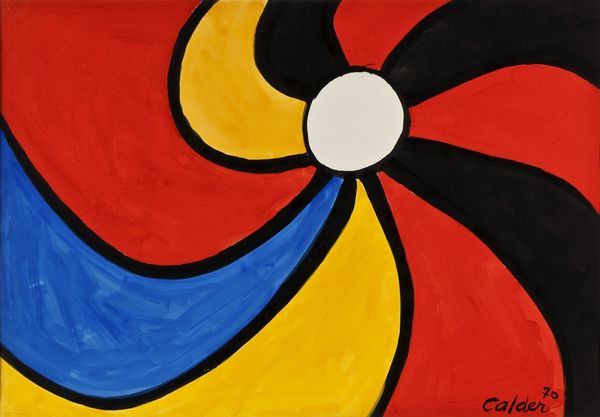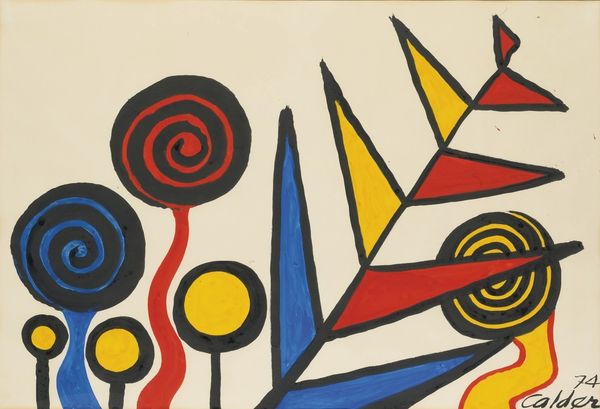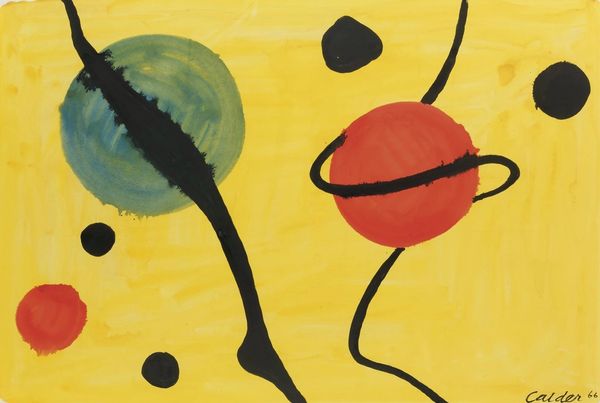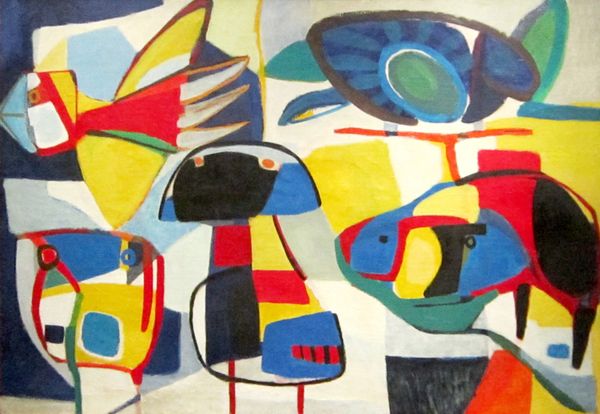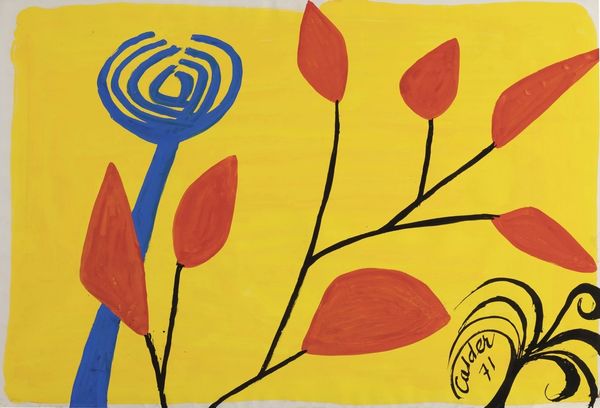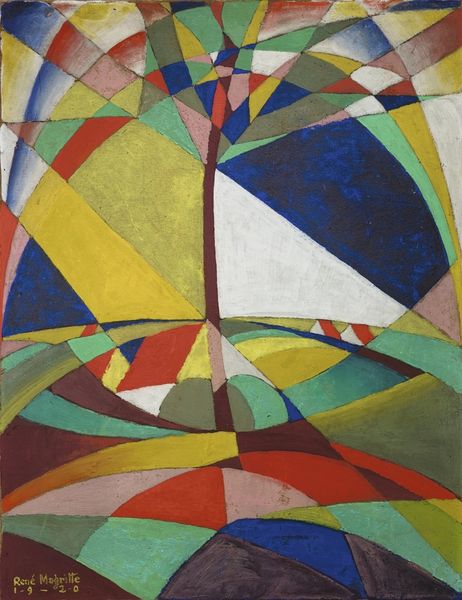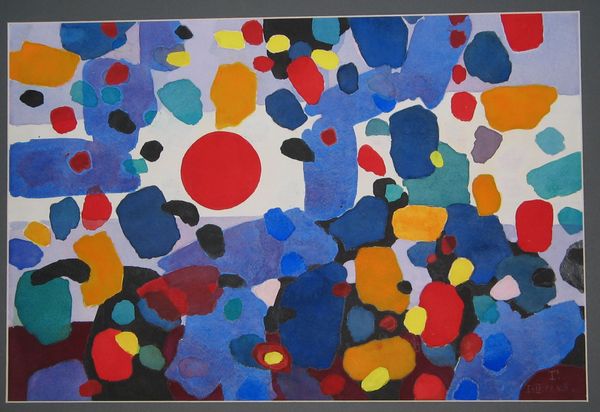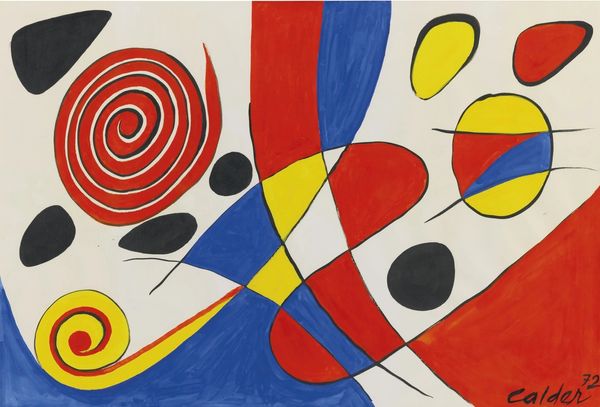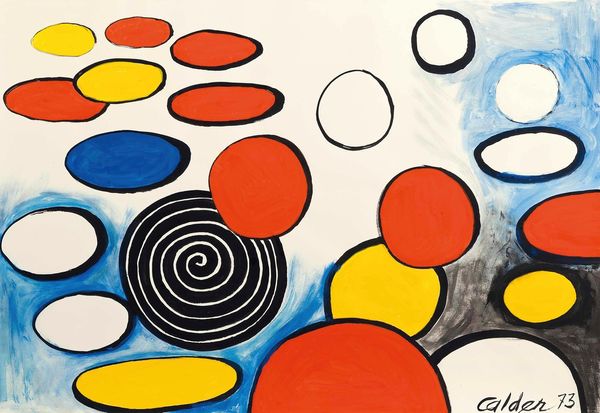
Copyright: Modern Artists: Artvee
Curator: Alexander Calder’s acrylic painting, "One Black Petal," dates to 1970. Editor: It's strikingly playful, isn't it? The bold colors and simplified shapes immediately grab your attention. There's almost a Matisse-like quality to its exuberance. Curator: Absolutely. What I find compelling is Calder’s consistent commitment to democratizing form. Though largely celebrated as a sculptor, particularly known for his mobiles, his paintings and gouaches also carry the same thread of questioning the established norms and values associated with visual art. Editor: I’m struck by the asymmetry. We have these roughly flower-like forms in yellow, red, blue, and orange but one deviates sharply – a single black “petal.” How do you read this formal divergence? Curator: Within a socio-political context, this distinct petal reads almost as an emblem of resistance. By 1970, many Black artists critiqued the lack of representation and pervasive discrimination in art institutions. So, a solitary dark element amid an array of colorful blooms speaks volumes—a silent rebellion against homogenisation. Editor: Or perhaps the darkness emphasizes the other colors even more, thus calling our attention to how vibrant colors give form a sensation of rhythm. What is rhythm, after all, if not an act of distinction. The hard lines could be an act of definition as well. The lines between Fauvism and Abstract Expressionism are blurred here, as are the very definitions we apply to “painting.” Curator: Certainly. I think that Calder's use of seemingly straightforward forms, like these floral motifs, should be examined as a statement regarding accessibility and representation. They question, "Who gets to see themselves, or parts of their experience reflected?" And “Who decides those standards of visibility?” Editor: Thinking purely structurally, it presents an arresting contrast—a disruption of pattern that forces the eye to reconsider the balance and the arrangement. It’s visually intriguing, and there's an underlying tension from the sharp demarcation of colors that plays on our sense of depth and surface. Curator: Yes. This dialogue between playful formalism and profound implications showcases art’s enduring capacity to question the status quo and reframe what constitutes 'beauty' and ‘inclusion’ in a creative landscape. Editor: Indeed. It’s pieces like this that show how simplicity in visual form can evoke such depth and nuance, keeping art ever relevant, isn't it?
Comments
No comments
Be the first to comment and join the conversation on the ultimate creative platform.
